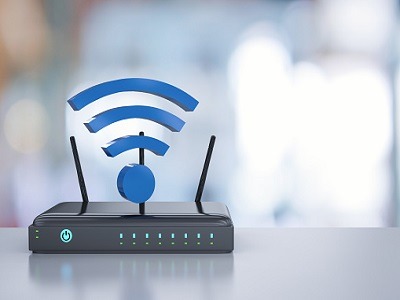#WirelessNetwork
Text

1 note
·
View note
Text
0 notes
Text
Wireless vs. Wired Data Connections: Pros and Cons

Data connections are necessary for everything in the modern digital world, from business and leisure to communication and research. There are two main alternatives for connecting to the internet and sending data: wireless and wired connections. Both offer certain benefits and drawbacks, so which one you choose will rely on things like convenience, dependability, and particular use cases.
Mobile access is made possible through wireless connections like Wi-Fi and cellular data. They are perfect for smartphones, laptops, and other portable devices since users may access the internet from a variety of locations within the network's service region. Physical cords are not required with wireless connectivity, simplifying setup and access. Without the limitations of cables, users may connect several devices to a single network. Wireless networks are perfect for temporary or portable setups since they are quick and simple to set up. They are frequently the first option for gatherings, coffee shops, and public areas.
On the other hand, signal interference from physical barriers, such as walls and other electrical equipment, can affect wireless connectivity. Reduced signal strength and slower data rates may be the results of this interference. If wireless networks are not properly protected, they may be open to intrusion. Data privacy is in danger in the absence of robust encryption and password protection. Even though wireless technology has come a long way, wired connections are often more dependable and swifter. Wired connections are frequently favored in settings like workplaces where reliable and fast data delivery is essential.
The user's individual demands and priorities will choose whether to employ a wireless or wired data connection. Wired connections are frequently favored in homes and workplaces where dependability and speed are crucial. Online gaming, streaming videos, and professional work are among the things that wired connections are most suited for. Mobile devices naturally gravitate toward wireless connections since they enable users to connect while on the road. The essential flexibility for smartphones, tablets, and laptops is provided through Wi-Fi and cellular networks. In certain circumstances, a mix of wireless and wired connectivity could be the best option. For instance, a residence could have wireless connectivity for portable devices and wired connections for PCs that are immovable.
In conclusion, there is no one-size-fits-all solution when choosing between wireless and cable data connections. Each has a unique mix of benefits and drawbacks that make them suited for certain use situations. The choice is made in accordance with the user's particular needs, which may include mobility, dependability, speed, or a mix of these.
Visit our website https://www.unlimitedsimplans.com/.
#MobileNetwork#smartphones#mobilesim#Mobilecarriers#WirelessNetwork#Internet#Internetconnection#Internetconnectivity#NextelleWireless
0 notes
Text
Choosing the Right Wireless Network Solution for Your Business
In today's fast-paced business environment, a reliable and efficient wireless network solution is critical to ensure seamless communication, productivity, and data transfer. As businesses increasingly rely on wireless connectivity, finding the right wireless network solution becomes essential. SOLNET CANADA, a reputable network solutions provider, offers a range of cutting-edge options to cater to diverse business needs. In this blog, we will explore the key factors to consider when choosing the perfect wireless network solution and highlight how SOLNET CANADA can elevate your business with its innovative offerings.
Point-to-Point Internet and WiFi Solutions
Point-to-Point (PTP) Internet and WiFi solutions are ideal for businesses looking to establish direct, secure, and high-speed wireless connections between two locations. We excel in implementing PTP solutions, which provide a dedicated link for data transfer without interference from other wireless devices. Whether it's connecting two offices, campuses, or remote locations, PTP Internet and WiFi solutions ensure reliable connectivity and seamless data transmission.
Point-to-Point Wireless Bridge
A Point-to-Point Wireless Bridge establishes a wireless connection between two separate networks, extending the reach of the existing network infrastructure. We expertise in deploying Point-to-Point Wireless Bridges enables businesses to overcome geographical barriers and connect remote offices or facilities, ensuring efficient communication and collaboration.
Cloud Router and Cloud Router Switch
We Cloud Router and Cloud Router Switch solutions leverage cloud-based technology to enhance network management and scalability. With cloud routers, businesses can centrally manage and configure multiple routers, simplifying network maintenance. The Cloud Router Switch offers the added benefit of combining the functionalities of a router and a switch, optimizing network performance and streamlining operations.
Wireless Backhaul
Wireless backhaul solutions are essential for businesses seeking to establish high-capacity links between access points and the core network infrastructure. Our wireless backhaul expertise ensures efficient data transfer and minimizes latency, enabling seamless connectivity for critical applications and services.
Enterprise WiFi Solutions
Modern businesses heavily rely on robust WiFi connectivity to cater to their workforce and customers. Our Enterprise WiFi Solutions provide secure, high-performance wireless networks that can support a large number of users simultaneously. Whether it's in an office, retail space, or public venue, our WiFi solutions deliver reliable and high-speed internet access.
Point-to-Point WiFi Extender
For businesses seeking to extend the range of their existing WiFi network, we offer Point-to-Point WiFi Extenders. These devices enhance the coverage of the WiFi signal, ensuring seamless connectivity across larger spaces, eliminating dead zones, and enhancing user experience.
Wireless Network Problems and Solutions
Wireless networks can encounter various challenges, such as interference, signal degradation, and security vulnerabilities. We experienced team excels in diagnosing and troubleshooting wireless network issues. Whether it's optimizing signal strength, enhancing security measures, or resolving connectivity problems, we provide effective solutions to keep your wireless network running smoothly.
Point-to-Point Internet Connection
We specializes in providing dedicated and secure Point-to-Point Internet Connections. This ensures that businesses can transfer data between locations with minimal latency and maximum reliability, guaranteeing uninterrupted productivity and communication.
Conclusion
Selecting the right wireless network solution is pivotal for businesses aiming to stay competitive and efficient in today's digital landscape. SOLNET CANADA, with its extensive expertise in wireless solutions, offers a wide array of options tailored to diverse business needs. From Point-to-Point Internet and WiFi solutions to Cloud Routers, Wireless Backhaul, and Enterprise WiFi solutions, SOLNET CANADA's innovative offerings empower businesses with seamless and secure wireless connectivity. By choosing SOLNET CANADA as your wireless network partner, you can rest assured that your business will experience a transformation in productivity, communication, and overall efficiency.
0 notes
Photo

Arduino LoRa communication Receiver section #lora #LoRa #communication #tx #rx #wireless #longrange #wirelessnetwork #electronics #easy #reviver #radio #rf #analog #arduino #robotics https://www.instagram.com/p/ChmjnXCtpKN/?igshid=NGJjMDIxMWI=
#lora#communication#tx#rx#wireless#longrange#wirelessnetwork#electronics#easy#reviver#radio#rf#analog#arduino#robotics
0 notes
Text

Scrape the data of Wireless Networking Companies worldwide
Get Scraped data like- Company name, Country, Addresses, Location, Founded year, Contact information, website url, social media page links, Headquartere, Total employees, revenue, Top decision makers list etc.
For more information, visit our official page https://www.linkedin.com/company/hir-infotech/ or contact us at [email protected]
#wirelessnetworking#companies#datascraping#hirinfotech#webscraping#dataanalysis#usa#germany#japan#uk#netherlands
2 notes
·
View notes
Text
Smart Dust Market: Unveiling the Next Frontier in IoT Solutions

According to the study by Next Move Strategy Consulting, the global Smart Dust Market size is predicted to reach USD 0.7 billion with a CAGR of 20.4% by 2030.
Request a FREE sample, here: https://www.nextmsc.com/smart-dust-market/request-sample
The Emergence of Smart Dust in the IoT Landscape:
The Internet of Things (IoT) has witnessed remarkable growth and transformation in recent years, revolutionizing how devices interact and communicate with each other. At the forefront of this technological revolution lies Smart Dust, a groundbreaking concept that promises to redefine the way we perceive and utilize connected devices. Smart Dust comprises miniature wireless sensors equipped with computing capabilities, enabling them to collect, process, and transmit data across vast networks. Despite their diminutive size, these sensors possess immense potential, offering a myriad of applications across various industries and sectors.
Understanding the Fundamentals of Smart Dust:
Smart Dust sensors are characterized by their miniature size, typically ranging from a few millimeters to micrometers in diameter. Despite their small stature, these sensors are equipped with a range of sophisticated components, including sensors, microprocessors, and communication modules. This allows them to gather real-time data from their surroundings, process it locally, and transmit it wirelessly to a central hub or server for further analysis. Additionally, Smart Dust sensors are designed to operate autonomously and in large numbers, forming dense networks known as "smart swarms." These swarms can efficiently cover large areas, providing comprehensive data coverage and insights.
Key Features and Benefits of Smart Dust:
One of the key features of Smart Dust is its versatility and adaptability. These sensors can be deployed in a wide range of environments and scenarios, from monitoring environmental conditions in remote wilderness areas to optimizing manufacturing processes in industrial settings. Moreover, Smart Dust sensors are energy-efficient, leveraging innovative power sources such as solar cells or energy harvesting techniques to prolong their operational lifespan. This ensures that they can operate autonomously for extended periods without requiring frequent battery replacements or maintenance.
The benefits of Smart Dust are manifold. By deploying these sensors in diverse environments, organizations can gain valuable insights into critical factors such as air quality, temperature, humidity, and pollution levels. This data can inform decision-making processes, optimize resource allocation, and enhance overall efficiency across various industries. For example, in agriculture, Smart Dust sensors can monitor soil conditions, crop health, and water usage, enabling farmers to make data-driven decisions and optimize agricultural practices. In urban environments, Smart Dust can facilitate smart city initiatives by monitoring traffic flow, air quality, and infrastructure integrity, leading to improved sustainability and liability.
Applications Across Industries:
The potential applications of Smart Dust span across a wide range of industries and sectors. In healthcare, Smart Dust sensors can be deployed for remote patient monitoring, medication adherence tracking, and disease surveillance. By continuously monitoring vital signs and medication intake, these sensors can enable healthcare providers to deliver personalized care and intervene proactively in case of emergencies. Moreover, Smart Dust sensors can play a crucial role in environmental monitoring and conservation efforts. By monitoring parameters such as air and water quality, biodiversity, and habitat integrity, these sensors can help scientists and conservationists better understand and protect fragile ecosystems.
In manufacturing, Smart Dust sensors can enhance predictive maintenance strategies, reducing downtime and optimizing operational efficiency. By continuously monitoring equipment performance and detecting early signs of malfunction or wear, these sensors can enable manufacturers to schedule maintenance tasks proactively, thereby minimizing unplanned downtime and maximizing productivity. Additionally, Smart Dust sensors can facilitate asset tracking and inventory management, enabling organizations to monitor the location and condition of valuable assets in real-time.
Challenges and Opportunities:
Despite its immense potential, the widespread adoption of Smart Dust is not without its challenges. One of the primary concerns surrounding Smart Dust is data privacy and security. As these sensors collect and transmit sensitive information, there is a risk of unauthorized access or misuse, posing potential privacy and security risks. Moreover, ensuring interoperability and compatibility between different Smart Dust systems and platforms remains a challenge. As Smart Dust technology continues to evolve and proliferate, efforts must be made to establish common standards and protocols to facilitate seamless integration and communication between different devices and networks.
Furthermore, advancements in miniaturization, energy efficiency, and sensor reliability are essential to unlock the full capabilities of Smart Dust. Continued research and development efforts are needed to develop smaller, more energy-efficient sensors that can operate reliably in a wide range of environments and conditions. Additionally, addressing concerns related to power consumption and battery life is critical to ensuring the long-term viability and sustainability of Smart Dust deployments.
Despite these challenges, the future outlook for Smart Dust remains promising. As technological advancements continue to drive innovation, we can expect to see further integration of Smart Dust into our daily lives, revolutionizing how we interact with our environment and enabling a more connected and intelligent world. From monitoring environmental conditions to enhancing healthcare delivery, Smart Dust has the potential to transform industries, empower individuals, and improve quality of life.
1. Revolutionizing Disaster Response and Management:
One significant area where Smart Dust can make a profound impact is in disaster response and management. By deploying Smart Dust sensors in disaster-prone areas, emergency responders can gain real-time insights into critical factors such as seismic activity, temperature fluctuations, and air quality. This data can help authorities better understand the evolving situation on the ground, coordinate rescue and relief efforts more effectively, and mitigate the impact of natural disasters on affected communities. Furthermore, Smart Dust sensors can be integrated into early warning systems, providing timely alerts and notifications to residents and authorities in high-risk areas, thereby saving lives and minimizing property damage.
Inquire before buying, here: https://www.nextmsc.com/smart-dust-market/inquire-before-buying
2. Empowering Sustainable Development Initiatives:
Smart Dust has the potential to play a pivotal role in advancing sustainable development initiatives across the globe. By monitoring environmental parameters such as air and water quality, soil health, and biodiversity, Smart Dust sensors can provide valuable data insights that inform conservation efforts, resource management strategies, and policy decisions. For example, in urban areas, Smart Dust sensors can help city planners optimize energy usage, reduce waste generation, and enhance public transportation systems, leading to more sustainable and resilient cities. Additionally, in rural and remote regions, Smart Dust sensors can support agricultural practices that promote soil conservation, water efficiency, and biodiversity conservation, thereby fostering sustainable livelihoods and economic development.
3. Fostering Innovation in Education and Research:
Furthermore, Smart Dust has the potential to revolutionize education and research by providing unprecedented opportunities for data collection, analysis, and experimentation. In academic settings, Smart Dust sensors can be utilized to conduct scientific research, monitor environmental phenomena, and facilitate hands-on learning experiences for students. By deploying Smart Dust sensors in classrooms and laboratories, educators can engage students in interactive lessons and experiments that foster critical thinking, problem-solving, and innovation skills. Additionally, Smart Dust sensors can enable researchers to gather large volumes of data from diverse environments and ecosystems, accelerating the pace of discovery and innovation in fields such as ecology, biology, and environmental science. Overall, the integration of Smart Dust into educational and research settings has the potential to democratize access to scientific knowledge, inspire the next generation of innovators, and address pressing global challenges.
Conclusion:
In conclusion, the smart dust market represents a paradigm shift in IoT innovation, offering unprecedented opportunities for data collection, analysis, and decision-making. With its miniature size, energy efficiency, and diverse range of applications, Smart Dust is poised to unveil the next frontier in IoT, transforming industries, enhancing efficiency, and improving quality of life. As we embark on this journey of exploration and discovery, the possibilities of Smart Dust are limited only by our imagination. By harnessing the power of Smart Dust, we can create a smarter, more sustainable future for generations to come.
This comprehensive exploration of the Smart Dust Market delves into its fundamentals, applications, challenges, and future prospects, providing insights into how this revolutionary technology is poised to reshape the IoT landscape and drive innovation across various industries and sectors.
#SmartDust#IoT#SensorTechnology#NanoTech#WirelessSensors#MicroElectromechanicalSystems#MEMS#WirelessNetworking#market research#industry analysis#market trends#innovation#semiconductors#electronic
0 notes
Text

#5GInfrastructure#5GNetwork#5GTechnology#WirelessNetworks#Telecommunications#MobileTechnology#IoT#InternetOfThings#SmartCities#DigitalTransformation
0 notes
Text
Wireless communication is a broad field encompassing various technologies and concepts for transmitting data without the use of physical cables or wires. Here are some keywords related to wireless communication
Nomination Link :https://x-i.me/emcnom
Get Connected Here:
==================
Facebook : https://www.facebook.com/profile.php?id=61556074815651
Twitter : https://twitter.com/PencisE28647
Pinterest : https://in.pinterest.com/electronicconference/
#WirelessCommunication#RFTechnology#WirelessNetworking#5GTechnology#WiFi#Bluetooth#MobileCommunication#IoTWireless#WirelessSecurity#CellularTechnology#NFC#SatelliteCommunication#WirelessStandards#MIMO#WirelessSpectrum
0 notes
Text
Discone Antenna: Exploring Its Design, Applications, and Advantages

In the realm of radio frequency (RF) communication and reception, antennas play a crucial role in transmitting and receiving electromagnetic signals. One such type of antenna that has gained prominence for its versatility and wide bandwidth capabilities is the discone antenna. In this article, we delve into the design, applications, and advantages of discone antennas, exploring their significance in various fields of communication and technology.
Understanding Discone Antennas:
A discone antenna, short for “disc-on-cone,” is characterized by its unique geometric structure, which consists of a flat disc-like element mounted on top of a cone-shaped structure. This distinctive design enables antennas to achieve broadband frequency coverage, making them suitable for a wide range of applications across different frequency bands.
Design and Construction:

The construction of an antenna typically involves two main components: the disc element and the cone element. The disc, usually made of metal, serves as the radiator and is connected to the feedline or coaxial cable. The cone, on the other hand, acts as the ground plane and provides structural support for the disc.
The dimensions of the disc and cone elements are carefully designed to achieve optimal performance across multiple frequency bands. The disc diameter and cone angle are critical parameters that determine the antenna’s frequency coverage and impedance-matching characteristics.
Applications of Discone Antennas:
Discone antennas find applications in various fields, thanks to their broadband capabilities and omnidirectional radiation pattern. Some common applications include:
Amateur Radio (Ham Radio): These antennas are popular among amateur radio operators due to their ability to cover a wide range of frequencies used in amateur radio bands. They are often used for transmitting and receiving signals in the VHF (Very High Frequency) and UHF (Ultra High Frequency) bands.
Military and Government Communications: These antennas are employed in military and government communications systems for their versatility and wideband coverage. They are used for monitoring and intercepting signals, as well as for communication purposes in the field.

Spectrum Monitoring and Surveillance: Antennas are employed in spectrum monitoring and surveillance applications to detect and analyze RF signals across a broad spectrum. They are used by regulatory authorities, law enforcement agencies, and intelligence organizations for monitoring radio frequency activity and identifying potential interference or security threats.
Radio Frequency Identification (RFID): Discone antennas are used in RFID systems for tracking and identifying objects using radio frequency signals. They are employed in applications such as inventory management, asset tracking, and access control systems.
Advantages of Discone Antennas:
These antennas offer several advantages over traditional antenna designs, making them a preferred choice for various applications:
Wideband Coverage: Such antennas provide coverage across a broad frequency range, eliminating the need for multiple antennas to cover different frequency bands. This wideband capability simplifies antenna deployment and reduces infrastructure costs.
Omnidirectional Radiation Pattern: Such antennas exhibit an omnidirectional radiation pattern, which means they radiate and receive signals equally in all directions. This characteristic makes them ideal for applications requiring 360-degree coverage, such as surveillance and monitoring systems.
Compact and Durable Design: Such antennas are compact and feature robust construction, making them suitable for both indoor and outdoor installations. Their durable design ensures reliable performance in harsh environmental conditions.

Easy Installation: Such antennas are relatively easy to install and configure, requiring minimal setup and adjustment. They can be mounted on a mast, rooftop, or any elevated structure using standard mounting hardware.
Conclusion:
In conclusion, discone antennas represent a versatile and efficient solution for broadband communication and monitoring requirements. Their wideband coverage, omnidirectional radiation pattern, and compact design make them well-suited for a wide range of applications across different industries and sectors. Whether used in amateur radio, military communications, wireless networks, or surveillance systems, discone antennas continue to play a vital role in facilitating reliable and efficient radio frequency communication.
0 notes
Text
Best Network hardware resellers in texas-Candid8
Candid8 Cost effective IT solutions Computers, printers, network devices hardware resellers Expert consulting to optimize your tech

#NetworkHardware#ITReseller#NetworkingSolutions#TechReseller#RouterDeals#SwitchSales#DataCenterNetworking#NetworkUpgrades#CiscoReseller#JuniperNetworks#NetworkInfrastructure#EnterpriseNetworking#ITNetworking#NetworkingGear#NetworkSecurity#WirelessNetworking#FiberOpticHardware#HardwareDistribution#NetworkPerformance#TechInfrastructure
0 notes
Text
Wireless Wonders: The Serendipitous Discovery of Wi-Fi

Wi-Fi has assimilated into our daily lives in the linked world of today. You may effortlessly surf the internet wirelessly no matter where you are, including at home, a coffee shop, or an airport. Have you ever thought about the origins of this amazing technology, though? The history of Wi-Fi's invention is one of inventiveness, creativity, and change in science.
Wi-Fi, which stands for "Wireless Fidelity," is a technology that enables wireless internet connectivity and communication between electronic devices. Its origins can be found in the 1940s when engineers and scientists were already investigating the potential of wireless communication. But Wi-Fi as we know it today didn't start to take shape until the late 20th century.
The history of radio waves and microwaves and the invention of Wi-Fi are closely related. Microwave technology was developed in the 1940s as a result of research into the properties of microwaves, particularly as they applied to radar systems used in World War II.
The field of computers developed during the 20th century. The necessity for wireless communication increased as a result of the development of the internet and the rising demand for linked products. To make this a reality, scientists and engineers started developing strategies.
Wi-Fi technology improved quickly during the following several years. It quickly became a common function in laptops and portable devices, and establishments and public areas started to provide Wi-Fi hotspots. The 1999-founded Wi-Fi Alliance was instrumental in establishing interoperability and security standards.
In conclusion, Wi-Fi was not created in a single "Eureka!" moment, but rather as the consequence of years of scientific inquiry, creative study, and unplanned exposure to microwave technology. We can now connect, work, and interact with one another with unprecedented ease thanks to Wi-Fi, which has since become a crucial aspect of our lives. This coincidental progression from radar and microwave systems to the wireless marvel of Wi-Fi exemplifies the amazing and unpredictably changing ways in which technology may advance and alter our world.
Visit our website at https://www.nextelle.net/.
#UnlimitedWireless#wirelessconnection#WirelessLAN#WirelessNetwork#LAN#Wifi#Internetconnection#Internetconnectivity#NextelleWireless
0 notes
Link
Hotspot history is a list of your past Wi-Fi connections on your phone. You should delete it to keep your internet activity private and secure.
The person who owns the WiFi network, ISP, has the ability to see what you search for and the websites you visit, even if you use incognito mode. Additionally, the owner of the router can find this information in the router logs.
#protecting your privacy#technology#tech#how to#how to delete#Hotspot History#browsing history#internet traffic#deletedata#wirelessnetworks#mobilehotspot#mobile hotspot#wireless network#network security#Device#browser#network#vpn#vpn service#internet#wifi connection#wifi#hotspot#internet service provider#isp#router#incognito#information#blogs#blogging
0 notes
Text
Quickly Add WPS Clients to Your Netgear Extender's WiFi

Adding a WPS (Wi-Fi Protected Setup) client to a Netgear range extender allows you to easily and securely connect devices like smartphones, tablets, and laptops to the extended Wi-Fi network. The WPS feature enables quick setup of protected wireless networks without having to enter long passwords.With most modern Wi-Fi devices having WPS capability, it provides a very convenient way to get clients connected to the range extender's SSID. The WPS exchange automatically negotiates the security, encrypts the connection, and joins the network without user intervention.
Conclusion
Adding a WPS client to a Netgear range extender provides a quick and easy way to connect devices to the extended wireless network. It eliminates the need to enter long WPA passphrases. With just a press of the WPS button, the client is securely connected.
Just make sure your extender has WPS capability, the client device is WPS-enabled, firmware is updated, and the extender is powered on before starting the WPS process. Initiating WPS and allowing the negotiation to complete will establish the connection.
Read the full article
#accesspoint#connecteddevices#encryption#extender#guide#howto#netgear#netgearrangeextender#networking#password#router#routers#security#tutorial#wifi#wifiextender#wifirangeextender#wireless#wirelessnetworking#wirelessroutersettings#wps#wpsclient
1 note
·
View note
Text
youtube
0 notes
Photo

Choosing the right wireless infrastructure for your business isn't easy - but we've got you covered! With our expert knowledge, we can help you select the right wireless access point for your business. Contact us today to learn more!
#wireless#accesspoint#networking#wirelessaccesspoint#technology#wifi#wifirouter#wirelesstechnology#wirelessnetworks#standaloneap#wirelessaccesscontrol#skylarkinformationtechnologies#accesscontrol#networksolutions#cloudcomputing#india#chennai#bangalore#mumbai#singapore#itinfrastructure#iitinfrastructuredevelopment#skylark
0 notes